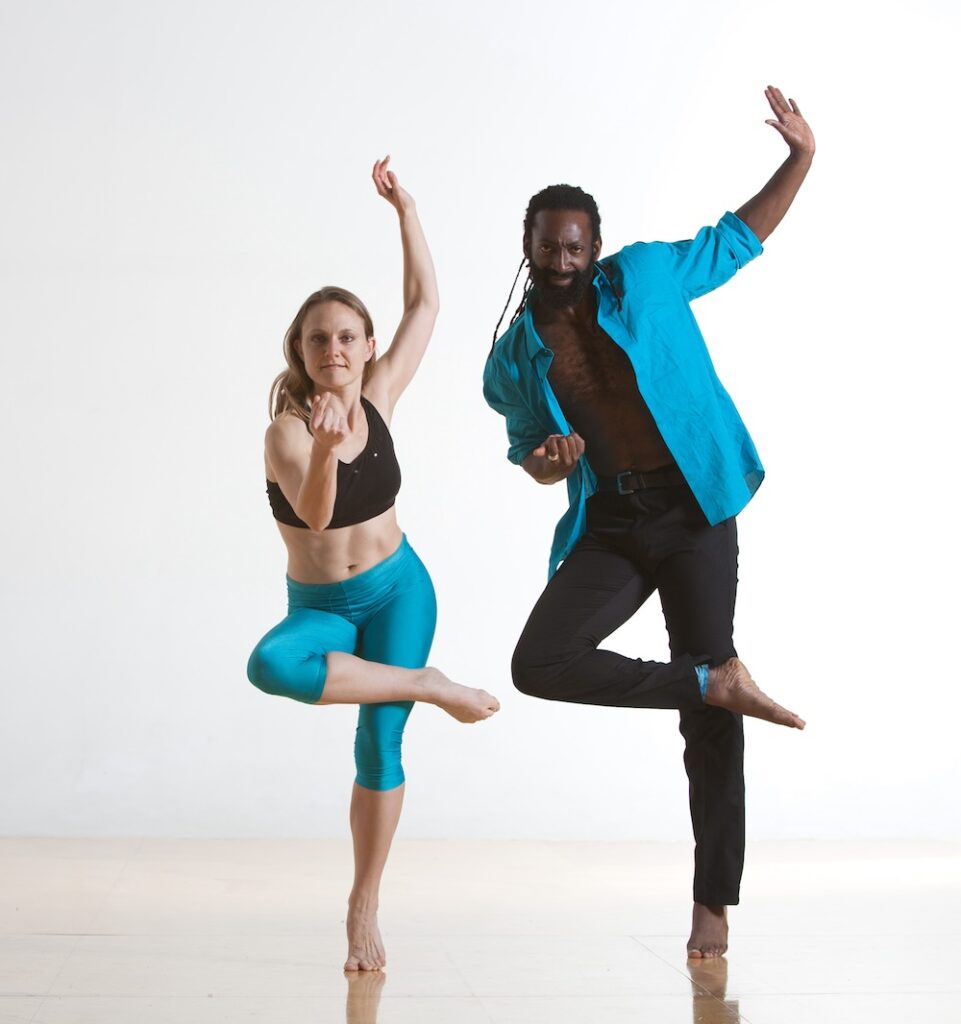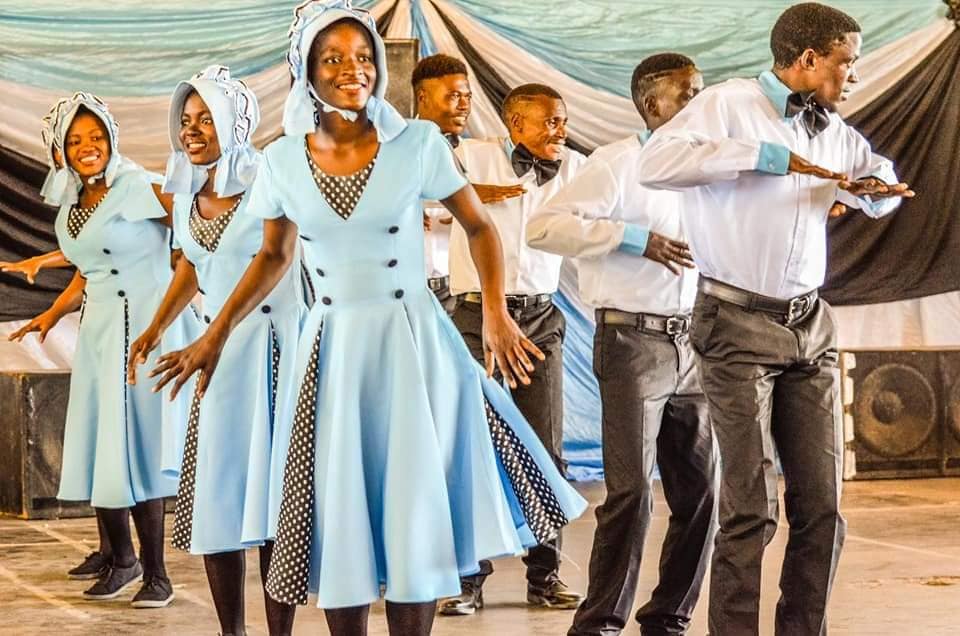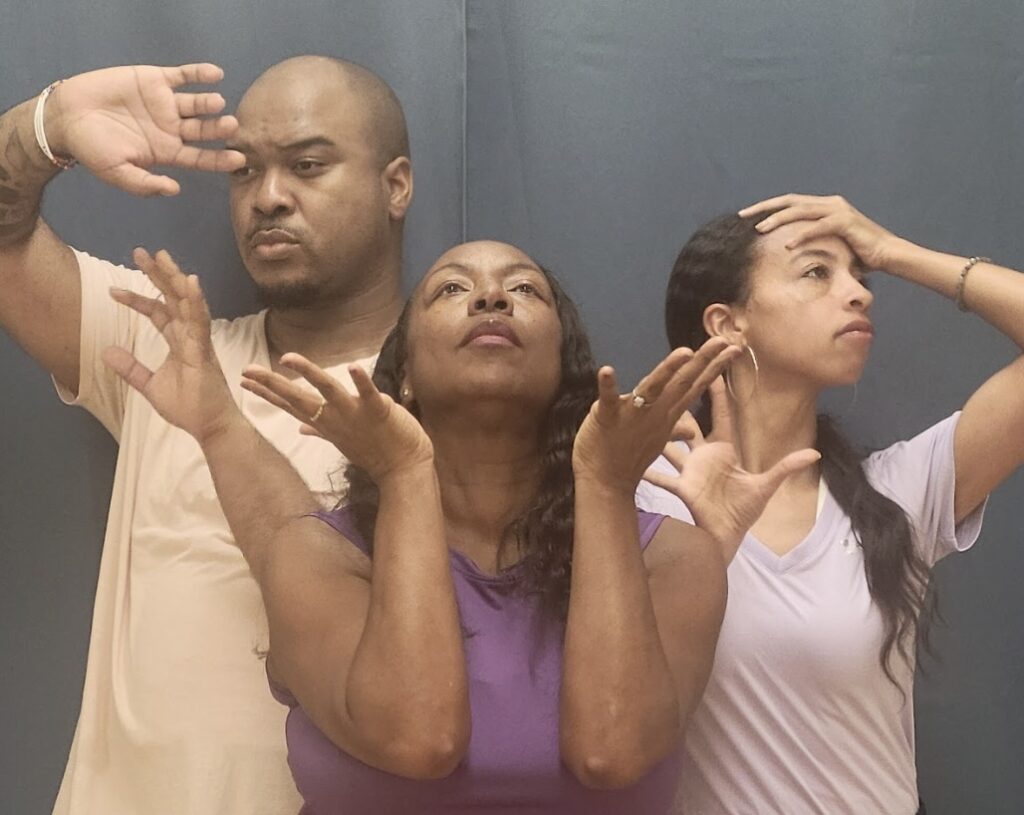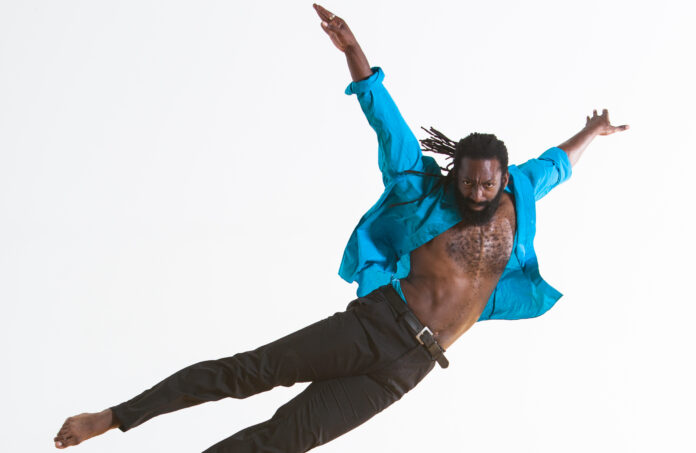Like most children Antoine Hunter used his body to communicate long before he learned to speak, but it took years before anyone realized he was deaf. “I was filling in the gaps, figuring out at 125 miles an hour,” he says. Hunter, artistic director of the Bay Area International Deaf Dance Festival (BAIDDF) and Urban Jazz Dance Company, can’t remember a time when he didn’t use movement and speech to communicate. “When I did speak they just thought I was speaking funny. I was about five years old when someone suggested I might be deaf.”
BAIDDF Assistant Director Zahna Simon says, “I don’t like speaking with my voice. I feel more connected to movement and can express myself more fully speaking with sign language.” Simon says in fourth grade she joined a ballet class after observing the teacher physically demonstrating rather than relying on verbal instructions. “They really provided an outlet for me,” she recalls. ”Everything always felt so oppressive for me before. I had been lonely. Dance saved my mental health because it taught me how to express myself.”
Hunter and Simon are preparing for the upcoming Bay Area International Deaf Dance Festival, Wed/6-August 10 in San Francisco and Berkeley, featuring workshops, special events and performances by Deaf and Hard of Hearing artists from Botswana, Colombia, Jamaica, New York, the Bay Area and around the United States.

“For many Deaf and HoH artists, the BAIDDF is their first experience being produced by a Deaf-led organization,” explains Hunter. “We have about a dozen sign interpreters working with us this year, signing all of our shows, and special events as well as our technical and dress rehearsals. Many theaters don’t provide this kind of access during production which means that often Deaf artists aren’t able to adequately communicate how they want their work to be presented.”
In addition to dance, BAIDDF features theater, poetry and live music, along with a diversity of Sign Languages including, but not limited to, American Sign Language (ASL), International Sign Language, Colombian Sign Language, and Jamaican Sign Language. Access at BAIDFF also includes “butt kickers” beneath the theater seats, a device connected to the sound system enabling viewers to feel the vibration of the music, as well as earplugs for those wanting lower volume and audio descriptions for Blind and Low-Vision audiences.
Simon notes that audiences often have an array of expectations for BAIDDF saying, “What people will probably be surprised by is that there is a variety of d/Deaf dancers, how they show up and how they express themselves.” Hunter recalls that when he launched BAIDDF thirteen years ago, people told him they were surprised that so many of the artists were people of color. “I thought, ‘what’s so different about that?’ I hadn’t realized that most festivals didn’t have as many people of color,” he comments. “Our organization is inspiring so many different artists to do it. They’re Deaf, they’re BIPOC, this is not easy, and we’ve recently been rejected for funding which makes it even harder.”
“We want people to be very open to Deaf artists who are coming and sharing Deaf culture in different ways. For some it’s their first time coming to America,” Hunter adds.”There’s still not a lot of work for Deaf dancers, so to be in a space with a Deaf led organization they feel more safe and inspired to work. Through the festival we come together to connect, share our history, communicate and understand each other. It’s deeply layered, bonding and healing.”
At the festival, Hunter will be presenting a new work for his Urban Jazz Dance Company. “For the past few years I’ve found it really important to investigate topics that bring light into the community. For this one, I’m focusing on children in education.” He explains some of the challenges Deaf and Hard of Hearing children face, from parents who worry their Deaf children don’t have a future, to schools where Deaf and disabled kids are mainstreamed without adequate support. He explains, “Some of it is revisiting the past of playing jumprope, tug of war, pattycake, roller coaster games, and four squares, that moment of being free to play with each other.”

Also performing are international multi-disciplinary artist, blogger and Deaf advocate Bianca Ware who will be assuming the characters of both Glinda and Elphaba from the musical “Wicked” for a performance she calls signed music. The Okavango Deaf Polka Dancers are coming from Botswana and actor, dancer, poet, Director of American Sign Language Fred Michael Beam will perform with the New York-based Wild Zappers.
Jamaican choreographer Cristophe Phillips (who just started his dance company this month) and his dancers will be performing a work blending traditional Jamaican folk with dancehall. Phillips reports that in Jamaica he’s working to create opportunities for Deaf artists, saying, “There’s still a need for a Deaf-owned dance company led by Deaf people, for Deaf people to create more opportunities and raise awareness about Deaf culture and performers. I dream of building a space called ‘Deaf Studio,’ fully run by Deaf artists, where we can rehearse, teach, perform and build community.”
Choreographer Noah James III of Visceral Roots is making a new work for BAIDDF with his co-director Ashley Gayle, entitled Joy. James, who is Hard of Hearing and has sickle cell disease, runs a sickle cell support group called the Pull Up and recently published the book The Gifts of Pain: Bookmarks of A #SickleCellWarrior Vol. 1, for which he is working on volume two. James is also a dancer with Ubran Jazz Dance Company. For Joy, he says, “We’re sharing stories about how we resist during our journey and how we still can have joy. No matter the obstacles, the oppression, the personal struggle you can still have joy and contribute to the community.”

Simon notes that BAIDDF features an array of special events available to all, including a panel discussion with the artists, a special 21 and up Night Life event at California Academy of Sciences in Golden Gate Park and dance workshops for youth and adults in San Francisco and Berkeley to which all are welcome.
James says that participating in BAIDDF is more than sharing his work with audiences. “The Festival becomes a space, a hub, where people of various nationalities, abilities, languages – there are so many intersections amongst us – come together to share, and connect with each other. We don’t allow our deafness to block us from engaging. Networking with people from across the world and other places and to see how they dance and tell their stories. It’s my favorite time of the year.”
“These are life-long relationships,” Hunter adds. “We get a wide range of dance and technique at its highest level. Technique within disabilities, maybe wheelchairs and disabilities you can’t see, and allies who want to perform with us and be a part of our experience. It’s not a thing you see all the time. It changes lives. It saves lives.”
13TH ANNUAL BAY AREA INTERNATIONAL DEAF DANCE FESTIVAL runs Wed/6-August 10 in Berkeley and San Francisco. Tickets and more info here.






